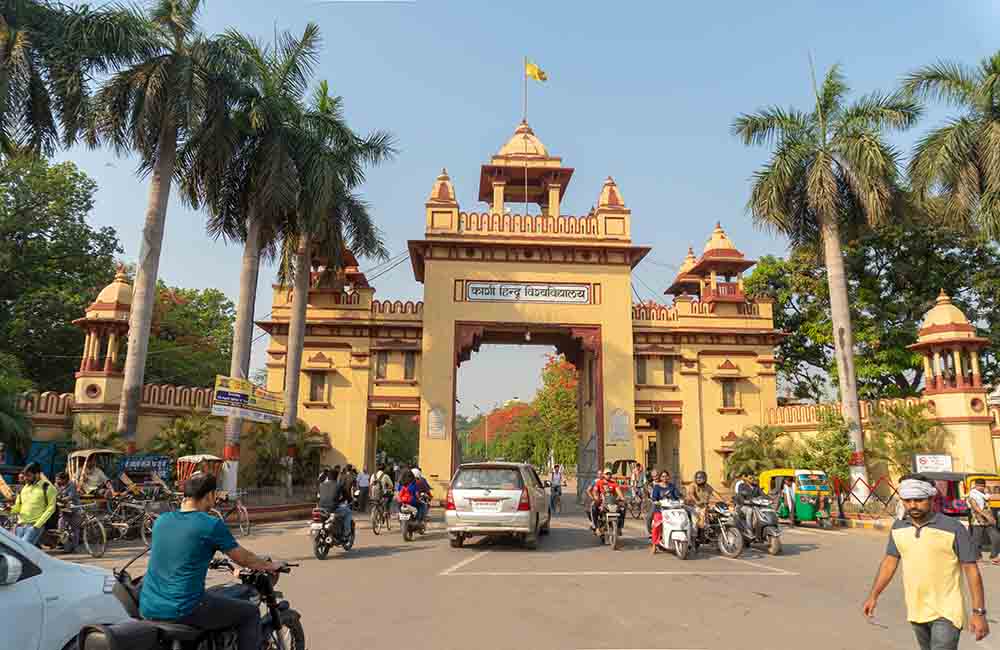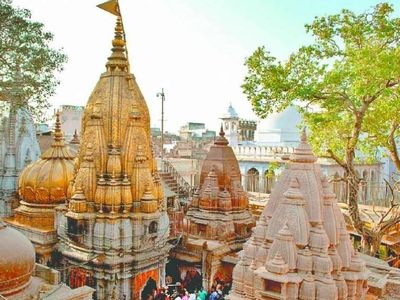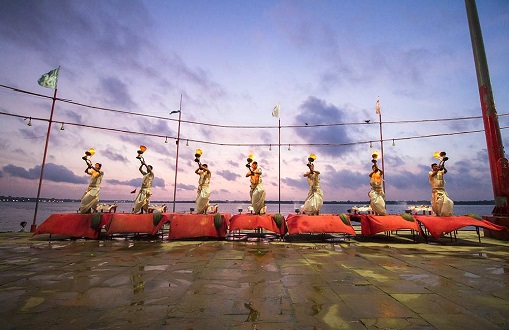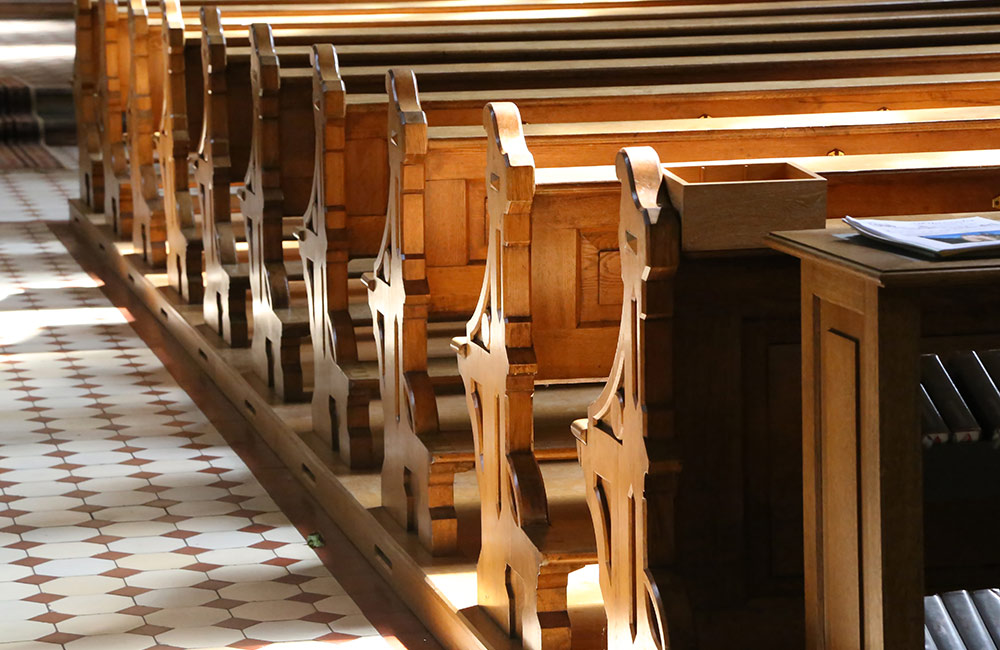Sarnath
Varanasi (Benares, Kashi) is the oldest living city in the world. It is the most sought after pilgrimage town for Hindus. It is believed, if anyone dies in Varanasi they attain salvation and freedom from the cycle of birth and rebirth. Sarnath, just 10 km away, where Buddha preached his first sermon after enlightenment, attracts devotees of many faiths. Lord Buddha preached for the first time after gaining enlightenment. Later, kings who followed Buddhism like King Ashoka built a lot of stupas and structures here that are focused on Buddhism. Buddhist pilgrims from various parts of the world visit Sarnath every year. Sarnath is also famous for the Ashoka pillar, which is now the country’s national emblem. It is also a pilgrimage spot for Jains.Best Time to Visit Sarnath
Sarnath is interesting throughout the year. During winter (October to March), the climate will be mild and suits sightseeing.

New Vishwanath Temple
Located inside Banaras Hindu University, this temple has tourists flocking to its doors on a daily basis. The Birla family that has been a hugely successful group of entrepreneurs in India commissioned its construction, leading locals to call it Birla Temple. A great thing about the temple is that it isn’t just one building, but actually seven separate temples that together make one big religious complex. The legendary old Vishwanath temple is a direct inspiration for the design of this temple. Every wall of it is covered in the utterings of Lord Krishna, when he recited the Bhagwad Gita. One of the most iconic temples in Varanasi, it is a must visit on a trip!
Dashashwamedh Ghat
This particular ghat is believed to be the oldest one in the city, and is hence considered special. If you have seen video footages of people bathing in Ganga and praying with diyas in their hand on the banks of a river, odds are that it was this ghat you saw. It is often abuzz because of the hordes of people who flock to it to wash away their sins and pray. Ascetics, Hindu devotees and tourists alike all alight on the banks of the Ganga at Dashashwamedh Ghat on a daily basis. Being such an important landmark and host to the famous Ganga aarti.
Ramnagar Fort
Located across the Ganga River from Tulsi Ghat, it was built out of sandstone in AD 1750 on the orders of Raja Balwant Singh, the king of Banaras at the time. He and his descendants have lived in that fort for centuries now. In 1971, the position of an official king was abolished by the government, but still Pelu Bhiru Singh, is commonly referred to as the Maharaja of Varanasi. Even though it was built by Hindu kings, it is a testament to the diversity of the region that it was built in the Mughal architectural style. It houses Veda Vyasa Temple, the king’s living quarters, and a museum dedicated to regional history.
Banaras Hindu University
BHU is located on the southern edge of Varanasi, near the banks of the river Ganges. Development of the main campus, spread over 1,300 acres (5.3 km2), started in 1916 on land donated by the then Kashi Naresh Prabhu Narayan Singh. The campus layout approximates a semicircle, with intersecting roads laid out along the radii or in arcs. Buildings built in the first half of the 20th century are fine examples of Indo-Gothic architecture.
The campus has over 60 hostels offering residential accommodation for over 12,000 students.[31] On-campus housing is also available to a majority of the full-time faculty.With about 30,000 students inside the campus, the Banaras Hindu University falls in the list of the biggest residential institutions in the world. The beautiful buildings and sprawling lawns will make you fall in love with this iconic, educational institution.
The main entrance gate and boundary wall was built on the donation made by Maharaja of Balrampur, Maharaja Pateshvari Prashad Singh.

St.mary's Church
The St. Mary’s Church is the oldest in the city and was built more than 200 years ago. This beautiful church is all decked up during Christian festivals and is crowded during the weekends.St Marys Church, located near JHV mall in Cantt. area of Varanasi, is the oldest church in the city adn oldest standing garrison church in South Asia. The church is locally known as Church of England and is 200 year old. It was established by Rev George Weatly, an English Officer, in 1810. The church has a glorious history as Queen Elizabeth II of England visited the church in 1960. It used as a place of worship by British Army and other members of European Community at that time.
Assi Ghat
Assi ghat is the everyone’s preferred ghat located in the south of the Varanasi. It is the place where one can spend hours very easily without any disturbance. It is the amazing and most natural place where students from foreign country, researchers and travelers are used to live here.
Assi ghat is place of huge crowd during any Hindu festivals where devotees come to take holy bath in the Gange water to get rid of from their all the past sin.Assi ghat is one of the most famous and visited ghats of the Varanasi for tour and tourism. People from all the corners of the country as well as abroad must come here if they come to India for tourism. Some of the great festival such as Mahashivaratri, Ganga Dashahara, Ganga Mahotsav etc attracts a huge crowd in the Varanasi at this ghat
Kashi Vishwanath Temple
Varanasi is home to Kashi Vishwanath Temple, which is dedicated to Lord Shiva. It enshrines one of the twelve Jyotirlingams of Shiva. It is said that this temple was rebuilt several times. The latest structure standing here dates back to the 18th century. Thousands of Pilgrims converge here to perform an abhishekam to the sacred Jyotirlingam, with water from the Ganga.
Beside its religious significance, the temple is also an architectural marvel. The magnificent edifice offers a breathtaking view to the onlooker. It is said that once Lord Shiva came in the dream of Rani Ahalya Bai Holkar of Indore. She, being a devotee of Lord Shiva, got the current temple built in 1777.
Vishwanath Khanda, also referred to as the Old City is located at the heart of Varanasi, between Dashashwamedha Ghat and Godaulia to the south and west and Manikarnika Ghat on the river to the north. The whole area rewards exploration, with numerous shrines and lingams tucked into every corner, and is buzzing with the activity of pilgrims, pandas and stalls selling offerings to the devotees.










